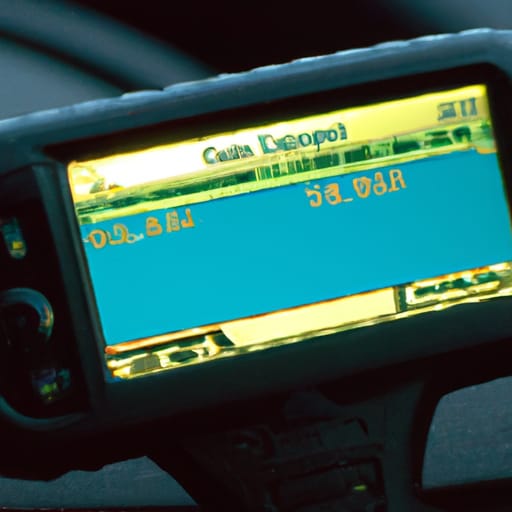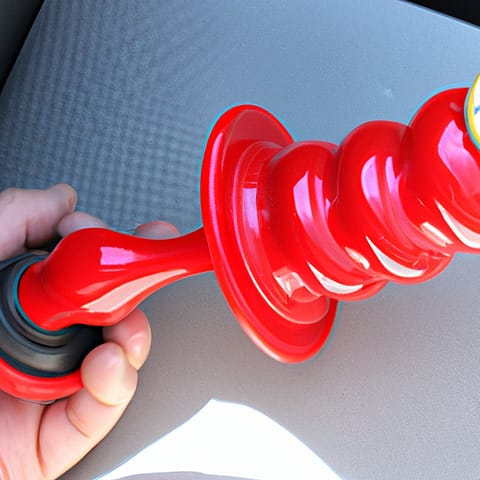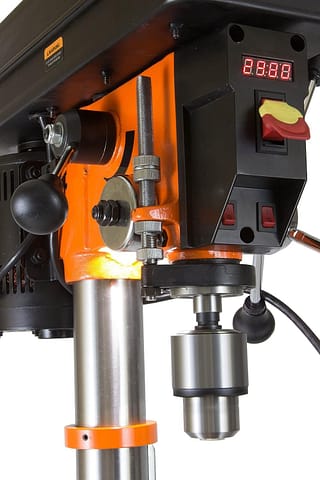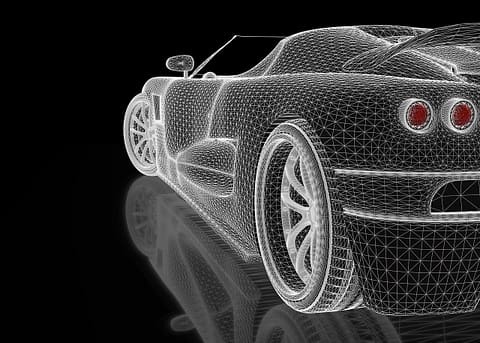Are you tired of spending excessive amounts of money at the mechanic every time your check engine light comes on? If so, you’re not alone. Many car owners are turning to home OBD2 scanners as a cost-effective solution to diagnosing and fixing their own vehicle issues. But do these scanners actually work? In this article, we will take a closer look at the effectiveness of home OBD2 scanners and explore whether they truly live up to their promises. So, grab a cup of coffee and get ready to uncover the truth behind these handy diagnostic tools.
What is an OBD2 Scanner?
Definition
An OBD2 scanner is a diagnostic tool used to access and retrieve information from the On-Board Diagnostic (OBD) system of a vehicle. It connects to the OBD2 port, which is usually located underneath the dashboard, and communicates with the vehicle’s Engine Control Unit (ECU) to retrieve diagnostic trouble codes, monitor engine performance, and perform various diagnostic functions.
How it Works
OBD2 scanners work by establishing a connection with the ECU through the OBD2 port using standard protocols. Once connected, the scanner retrieves data from the ECU, such as diagnostic trouble codes, which indicate specific issues with the vehicle’s systems. The scanner then decodes these codes and provides the user with information about the problem areas, allowing them to take appropriate action.
Types of OBD2 Scanners
There are generally two types of OBD2 scanners: handheld scanners and Bluetooth scanners. Handheld scanners are standalone devices that have a built-in screen display and provide all the necessary functions for diagnosing and troubleshooting. Bluetooth scanners, on the other hand, connect to a smartphone or tablet via Bluetooth and use a compatible app to display the diagnostic information.
Advantages of Home OBD2 Scanners
Convenience
One of the major advantages of home OBD2 scanners is their convenience. With a scanner readily available at home, you can diagnose your vehicle’s issues at any time, without having to schedule an appointment or visit a mechanic. This allows you to save both time and effort, especially for minor issues that can be resolved without professional help.
Cost-effective
Home OBD2 scanners can also be cost-effective in the long run. Instead of relying on mechanics for every minor issue, you can use the scanner to identify the problem and decide whether it requires professional attention or not. This can potentially save you money on unnecessary repairs and diagnostics.
Access to Diagnostic Information
Having a home OBD2 scanner gives you access to valuable diagnostic information about your vehicle. Instead of relying solely on the interpretation of a mechanic, you can now have a better understanding of the issues your vehicle is facing. This enables you to make more informed decisions regarding repairs and maintenance.
Limitations of Home OBD2 Scanners
Limited Functionality
While home OBD2 scanners are useful for basic diagnostics, they have limited functionality compared to professional tools. They may not have the same range of diagnostic features and capabilities, especially for advanced diagnostics and specialized systems. Therefore, there may be certain issues or conditions that a home scanner cannot detect or diagnose accurately.
Compatibility Issues
Another limitation of home OBD2 scanners is the compatibility with vehicle make and model. Not all scanners are compatible with every make and model of vehicles. It is important to ensure that the scanner you choose is compatible with your specific vehicle to avoid any compatibility issues and to ensure accurate readings.
Inability to Perform Advanced Diagnostics
Home OBD2 scanners are primarily designed for basic diagnostics and troubleshooting. They may not have the capability to perform advanced diagnostic functions such as programming modules, advanced recalibration, or extensive system analysis. For complex repairs and in-depth diagnostics, professional tools and expertise may still be necessary.
Working Principle of Home OBD2 Scanners
Standard Protocols
Home OBD2 scanners communicate with the ECU using standard protocols such as SAE J1850 PWM, SAE J1850 VPW, ISO9141-2, ISO14230-4 (KWP2000), and ISO15765-4 (CAN). These protocols define the communication parameters and data formats used by the scanner to retrieve and transmit information from the ECU.
Communication with the ECU
The scanner establishes a connection with the ECU by sending and receiving data through the OBD2 port. It transmits commands and requests to the ECU, and the ECU responds with the requested information. This two-way communication allows the scanner to retrieve real-time data and diagnostic trouble codes from the vehicle’s systems.
Retrieving and Decoding Diagnostic Trouble Codes (DTCs)
One of the key functions of a home OBD2 scanner is retrieving and decoding diagnostic trouble codes (DTCs). The scanner reads the DTCs stored in the ECU, which are numerical codes that represent specific issues with the vehicle’s systems. The scanner then decodes these codes to provide a description of the problem, allowing the user to understand the issues their vehicle is facing.
Types of Diagnostic Trouble Codes (DTCs)
Generic Codes
Generic codes are diagnostic trouble codes that are standardized across all vehicles equipped with OBD2 systems. These codes are defined by the Society of Automotive Engineers (SAE) and provide general information about the issues detected in the vehicle. Generic codes typically start with the letter ‘P’ followed by four digits.
Manufacturer-Specific Codes
Manufacturer-specific codes, as the name implies, are diagnostic trouble codes that are specific to a particular vehicle manufacturer. These codes provide more detailed information about the issues detected in the vehicle. Manufacturer-specific codes usually start with the letter ‘P’ followed by three digits, followed by the letter ‘B’, ‘C’, ‘U’, or ‘U’ and four digits.
Pending Codes
Pending codes are temporary diagnostic trouble codes that indicate a potential issue that has not yet resulted in a stored trouble code. These codes are useful for identifying intermittent issues or problems that may require further monitoring. The presence of pending codes allows the user to take early action before the problem worsens.
Common Applications of Home OBD2 Scanners
Checking Engine Performance
One of the primary applications of home OBD2 scanners is checking engine performance. By retrieving real-time data from the ECU, the scanner can monitor various parameters such as engine speed, fuel efficiency, coolant temperature, and more. It enables you to identify any abnormalities or issues with the engine performance and take appropriate action.
Monitoring Emission Levels
Home OBD2 scanners can also be used to monitor emission levels. The scanner can retrieve data related to the vehicle’s emission control systems, such as oxygen sensor readings, catalytic converter efficiency, and evaporative system integrity. This allows you to ensure that your vehicle complies with emission regulations and detect any potential issues with the emission control systems.
Resetting Check Engine Light
Another common application of home OBD2 scanners is resetting the check engine light. When a diagnostic trouble code is triggered, the check engine light illuminates on the dashboard. Once the issue has been resolved, the scanner can be used to clear the codes and reset the check engine light. This provides a visual indication that the problem has been addressed.
Factors to Consider When Choosing a Home OBD2 Scanner
Compatibility with Vehicle Make and Model
One of the most important factors to consider when choosing a home OBD2 scanner is compatibility with your vehicle make and model. Not all scanners are compatible with every vehicle, so it is crucial to ensure that the scanner you choose supports your specific vehicle to avoid any compatibility issues and to ensure accurate readings.
Supported Diagnostic Functions
Different scanners offer different diagnostic functions and capabilities. Some scanners may only provide basic diagnostic functions and trouble code reading, while others may offer advanced features such as live data streaming, bidirectional control, and system analysis. Before making a purchase, consider the diagnostic functions you require and choose a scanner that meets your needs.
User Interface and Ease of Use
The user interface and ease of use are also important factors to consider when choosing a home OBD2 scanner. A scanner with a clear and intuitive interface makes it easier to navigate through menus, retrieve diagnostic information, and interpret the results. Look for a scanner that has a user-friendly interface and provides clear instructions to ensure a smooth user experience.
How to Use a Home OBD2 Scanner
Locating the OBD2 Port
To use a home OBD2 scanner, start by locating the OBD2 port in your vehicle. The port is typically located underneath the dashboard, near the steering column. It is usually rectangular in shape and has 16 pins. Refer to your vehicle’s manual or consult online resources to find the exact location of the OBD2 port in your vehicle.
Connecting the Scanner
Once you have located the OBD2 port, connect the scanner to the port using the provided cable. Ensure that the ignition is turned off before connecting the scanner. Once connected, turn on the ignition and power up the scanner. Follow the instructions provided with the scanner to establish a connection with the ECU and retrieve diagnostic information.
Interpreting Diagnostic Trouble Codes (DTCs)
After retrieving the diagnostic trouble codes (DTCs), interpret the codes using the scanner’s built-in database or by referring to online resources. The scanner will typically provide a brief description of the code, which can help you identify the issues with your vehicle. Take note of the codes and descriptions for reference or further diagnostics.
Comparing Home OBD2 Scanners to Professional Tools
Functionality and Capability
Home OBD2 scanners are generally more limited in terms of functionality and capability compared to professional tools. Professional tools are often equipped with advanced features and functions that allow for more in-depth diagnostics and repairs. They may have access to manufacturer-specific codes, advanced programming capabilities, and more extensive system analysis.
Cost
Another aspect to consider when comparing home OBD2 scanners to professional tools is the cost. Home OBD2 scanners are generally more affordable compared to professional tools, which can be quite expensive. While professional tools offer advanced features, they may not be necessary for regular home use, especially for minor diagnostic tasks.
Expertise and Training
Professional tools often require a certain level of expertise and training to operate effectively. They may have complex interfaces and advanced functions that require specialized knowledge. Home OBD2 scanners, on the other hand, are designed to be user-friendly and accessible to the average vehicle owner. They provide intuitive interfaces and clear instructions for ease of use.
Real-World Experiences with Home OBD2 Scanners
Positive Reviews
Many users have had positive experiences with home OBD2 scanners. They appreciate the convenience of being able to diagnose and troubleshoot their vehicles from the comfort of their homes. Users have reported successfully identifying and resolving various issues using their scanners, saving both time and money by avoiding unnecessary trips to the mechanic.
Challenges Encountered
While home OBD2 scanners can be useful, some users have encountered challenges during their diagnostic processes. Some scanners may struggle with compatibility issues, leading to inaccurate readings or difficulty establishing a connection with the ECU. Additionally, home scanners may not have the same level of functionality as professional tools, limiting their effectiveness in certain situations.
Best Brands and Models
There are several reputable brands and models of home OBD2 scanners available in the market. Some popular brands include Motopower, FixD and BlueDriver. These brands offer a range of scanners with different features and capabilities to meet the needs of various vehicle owners. It is recommended to research and read reviews to determine the best brand and model for your specific requirements.
In conclusion, home OBD2 scanners are valuable tools for diagnosing and troubleshooting vehicle issues. They provide convenience, cost-effectiveness, and access to diagnostic information. However, they do have limitations in terms of functionality and compatibility. Understanding the working principle, types of diagnostic trouble codes, and common applications of home OBD2 scanners can help you make an informed decision when choosing a scanner. Additionally, knowing how to use a scanner and comparing it to professional tools can further enhance your diagnostic capabilities. With the right scanner and proper knowledge, you can confidently diagnose and address issues with your vehicle, saving both time and money in the process.










